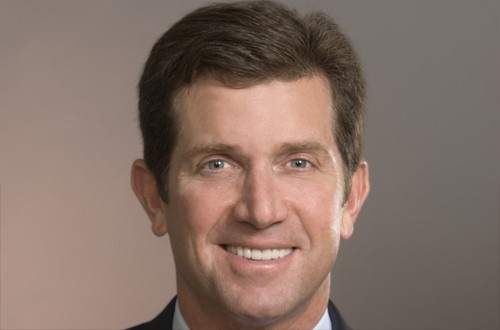
Alex Gorsky is CEO of J&J
Johnson & Johnson is aiming to break out of the boom/bust cycle often seen in pharma by entering a new product launch phase while still enjoying the benefits of its last crop of drugs, according to chief executive Alex Gorsky.
Speaking during the healthcare giant’s fourth-quarter results call yesterday, Gorsky said J&J is planning ten new product filings between 2013 and 2017, having already launched 14 new products since 2009, six of which have passed the $1bn sales threshold.
Among the pipeline projects highlighted by Gorsky are esketamine, a glutamate NMDA antagonist that he described as a “potential breakthrough medication” for treatment-resistant depression, as well as anti-CD38 antibody daratumumab for multiple myeloma.
He also pointed to the potential of ARN-509, a next-generation androgen receptor inhibitor for prostate cancer that could complement its successful Zytiga (abiracetone) product, as well as J&J’s immunology programme which includes IL-6 inhibitor guselkumab for psoriasis and IL-23 inhibitor sirukumab for rheumatoid arthritis.
Fulranumab, an anti-nerve growth factor (NGF) antibody for osteoarthritic pain, is another drug with significant potential coming through the pipeline, he said. That indicates something of a renaissance for fulranumab, which was placed under an FDA clinical hold in 2011 after being linked to an increased risk of joint damage.
Gorsky’s comments came as J&J reported a 9.6% gain in prescription drug sales in the fourth quarter to a little under $8bn, driven by hepatitis C virus therapy Olysio (simeprevir), novel oral anticoagulant Xarelto (rivaroxaban) and Zytiga.
Overall, revenues at the group slipped a little under one percentage point to $18.3bn – missing analysts’ estimates – and profit fell 28% to $2.5bn on litigation charges as well as rising costs, particularly in R&D.
Exchange rates took a toll on overall sales, but pharma shrugged that off thanks to a surge in Olysio sales to $321m from $23m in the fourth quarter of 2013, with Zytiga growing 20% to $595m and Xarelto up an impressive 58% to $428m. Also performing well was psoriasis therapy Stelara (ustekinumab), rising 30% to $545m.
Tough times ahead?
Despite the bullish stance, J&J’s share price dropped after the results announcement, because investors are starting to see signs of weakness in some of its current flagship products.
Olysio drove growth in 2014 but will come under pressure from new HCV therapies such as Gilead Sciences’ Harvoni (sofosbuvir/ledipasvir) and AbbVie’s new four-drug combination Viekira Pak (ombitasvir/paritaprevir/ritonavir) and dasabuvir, and there were already signs of this impact with fourth-quarter sales of the drug lower than in the third quarter.
Meanwhile, Stelara is facing competition from Novartis’ recently approved IL-17 inhibitor Cosentyx (secukinumab) in psoriasis, Xarelto is facing ever more competition from other NOACs and Invokana is operating in an increasingly crowded diabetes market.
J&J has acknowledged that 2015 could be a little challenging, predicting slightly lower earnings compared to 2014.




